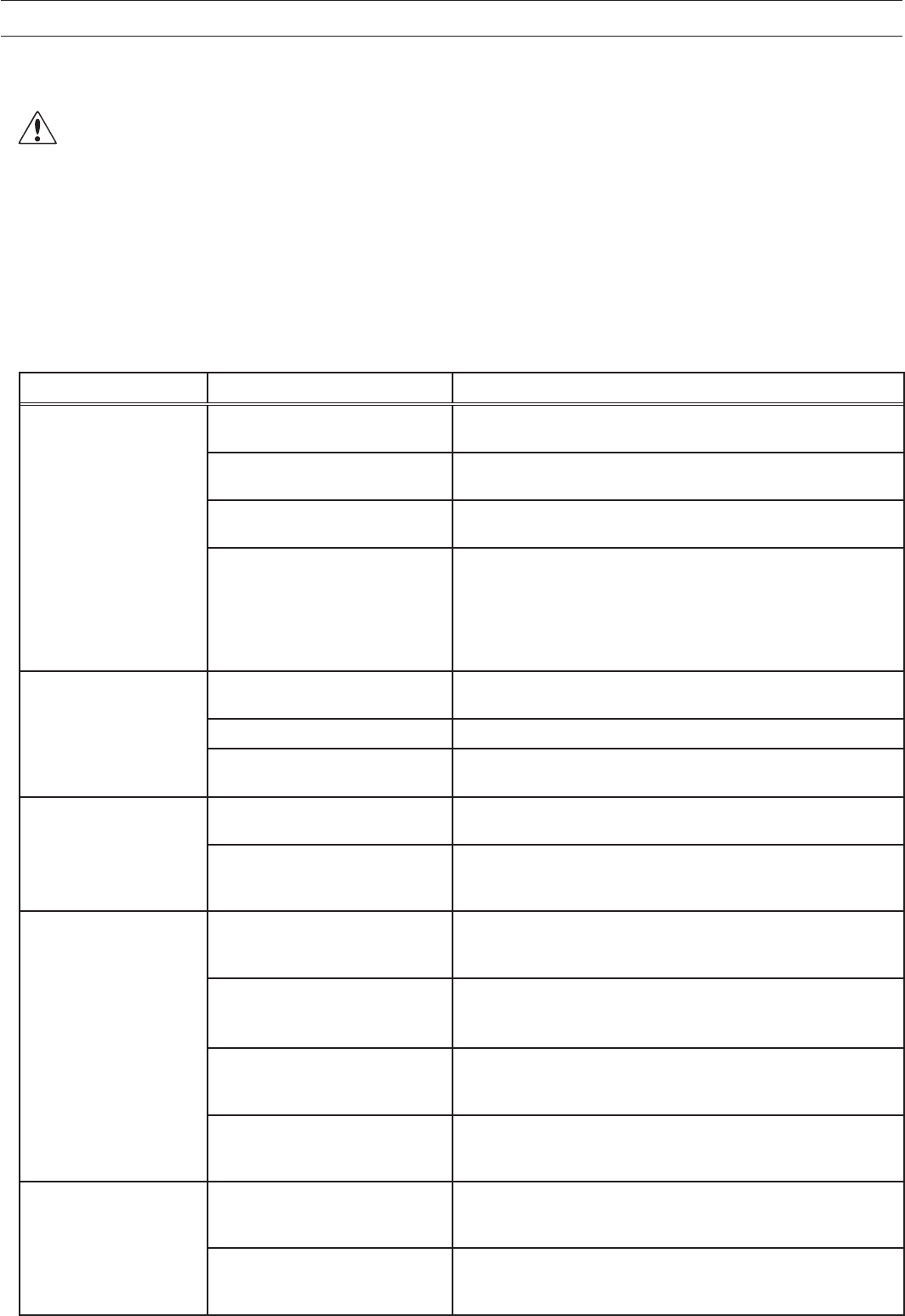
TROUBLE SHOOTING
Trouble shooting guide
WARNING!
Most accidents involving machines occur during trouble shooting, service and maintenance as staff have to
locate themselves within the machine’s risk area. Prevent accidents by being alert and by planning and prepar-
ing the work. You can also refer to ’Preparations for maintenance and service” in the ’Maintenance and serv-
ice” section.
If service operations or trouble shooting does not require the machine to be switched on, the power cable
must be removed and positioned so that it cannot be connected by mistake.
Following the trouble shooting guide will provide you with tips to facilitate the trouble shooting process. You can also
perform simpler trouble shooting operations. The operator may only carry out the maintenance and service opera-
tions that are described in this Operator’s Manual. More extensive interventions must be carried out by an authorized
service workshop.
Always start by checking any error messages on the remote control. Follow the instructions for the respective mes-
sage in accordance with the error messages section.
Fault Cause Possible action
The electric motor
does not start
Emergency stop/machine stop
is pressed.
Check that the emergency stop or machine stop button
are not pressed by turning them clockwise.
Too low mains voltage to the
machine.
Check power supply and ensure correct voltage.
A fuse has blown. Check that the mains voltage is compatible with the ma-
chine and that the correct fuses are used.
No radio communication
between remote control and
machine.
Green symbol in the display indicates contact. If the symbol
does not light up, check that the battery for the remote con-
trol is charged and correctly inserted. Ensure that the cor-
rect remote control is being used. Check that the commu-
nication cable and aerial cable on the machine are properly
secured. Test run the machine using cable control.
Fuses for the mains
connection blow when
starting.
The machine’s fuses have too
low a rating.
Check that the mains voltage is compatible with the ma-
chine and that the correct fuses are used.
Electric motor blown. Contact your service agent.
The hydraulic pump has cut
out.
Contact your service agent.
The machine works
but the motor speed
decreases substantial-
ly during operation.
Too low mains voltage to the
machine.
Check power supply and ensure correct voltage.
Incorrectly dimensioned
power cable.
Ensure that the power cable is correctly dimensioned.
Refer to “Guide values for mains connection” in the
“Technical data” section.
The motor runs but
the hydraulic functions
have no power or do
not work at all.
Not enough hydraulic fl uid
in the tank. (Knocking noise
coming from the tank.)
Stop the motor at once. Investigate and rectify any leaks
there might be. Replenish hydraulic fl uid.
Pump around valve open. Check the diode on the valve cap at the bottom of valve
block 1. If the pump around valve is open the diode does
not light up. Check the cable to the control module.
Fault in the pump regulator. Extend an unloaded cylinder to its end position and
check the pump pressure in the display (under “Service”).
If you get maximum pressure the pump regulator is OK.
Pressure at rest set too low. Activate the remote control without running any functions
and check the setting for pressure at rest in the display.
The pressure should not exceed 16 Bar.
Arm movements
and tool function run
slowly.
The potentiometer that con-
trols mechanical movements/
tools is screwed down.
Unscrew the knob(s).
Pressure at rest set too low. Activate the remote control without running any functions
and check the setting for pressure at rest in the display.
The pressure should not exceed 16 Bar.
48 - English


















